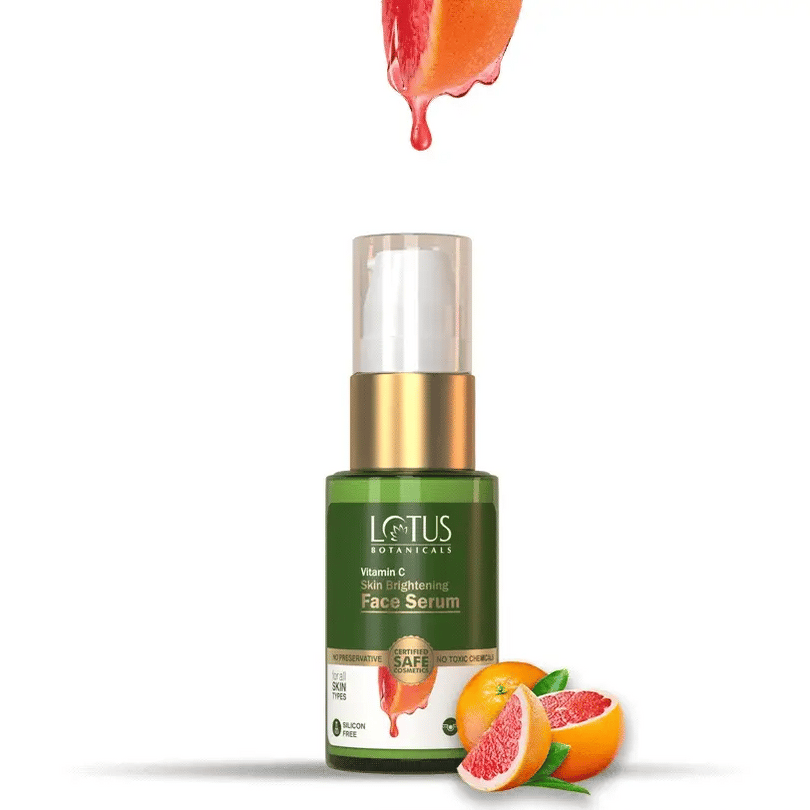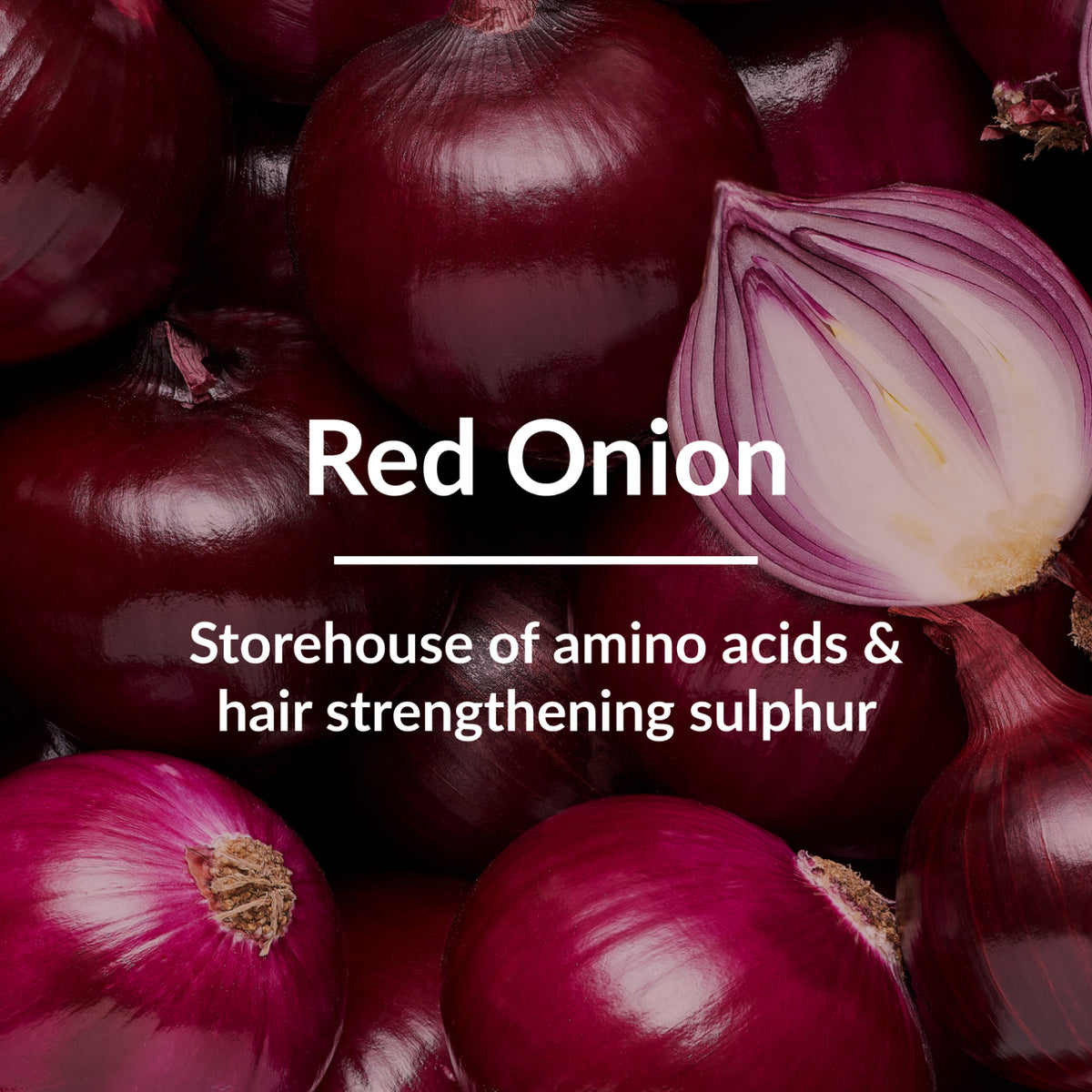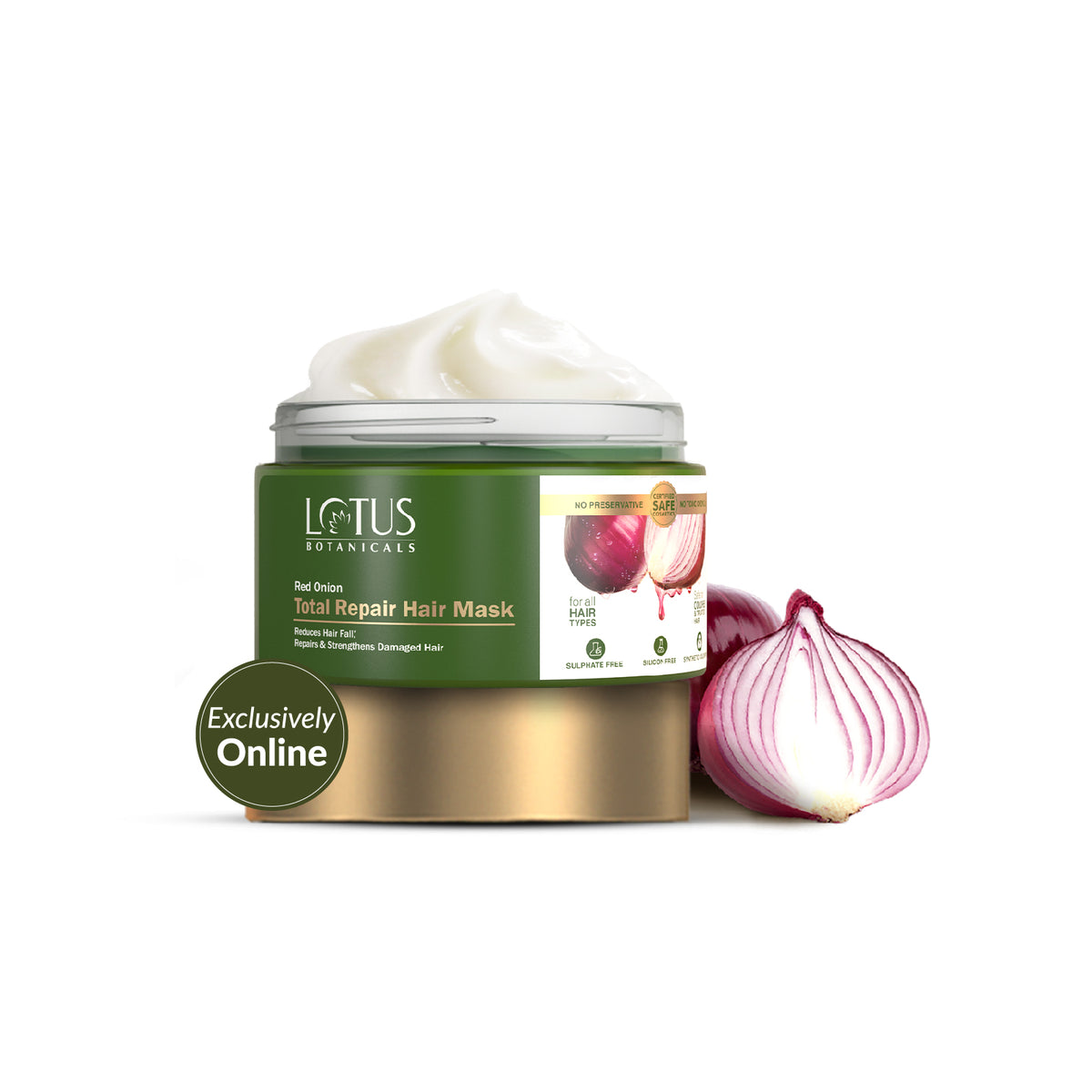
Highlights
-
When to Seek Professional Advice?
-
Myths & Facts
Understanding Different Hair Types and Their Care
Hair is not just a feature on our heads; it's an important part of who we are. Just like our skin and eyes, our hair is unique and comes in various types. Have you ever wondered why your friend's hair is curly while yours is straight? Or why do some people's hair seem to bounce and wave while others have tight coils? This article is here to unravel those mysteries and help you understand the different hair types that exist.

Taking care of our hair is like taking care of a special plant, it needs the right kind of care to grow beautifully. Whether your hair is straight, wavy, curly, or coily, each type has its own needs and quirks.
Learning about your hair type will empower you to make the best choices for its care, keeping it healthy, shiny, and happy. So let's discuss hair types, their individual traits, and how to keep them looking their best.
Classification of Hair Types
Hair classification is a way of categorizing hair based on various characteristics such as texture, curl pattern, thickness, and other traits.
There are different systems used to classify hair types, but one of the most commonly referenced systems is the Andre Walker Hair Typing System. This system categorizes hair into four main types (labeled 1 through 4) and further divides each type into subcategories.
Keep in mind that this system primarily focuses on the curl pattern of hair. Here's a brief overview
Type 1: Straight Hair
Type 1 hair is characterized by its lack of natural curl or wave. It falls directly from the scalp without any significant bends or twists.
There are three subcategories within Type 1:
- 1A, which is very fine and thin
- 1B, with a medium texture
- 1C, which is coarser and thicker.
Straight hair tends to be shiny, but it can also become oily easily. It often lacks volume and can be challenging to hold curls or styles without the use of styling products or tools.
Type 2: Wavy Hair
Wavy hair falls into the Type 2 category of the hair typing system. It possesses a noticeable "S" pattern, creating gentle waves along the strands. There are three subcategories within this type, each with distinct characteristics.
- 2A: Fine and relatively loose waves.
- 2B: Medium-textured waves that might frizz and have a bit more volume.
- 2C: Coarse, thicker waves that tend to be more resistant to styling and might exhibit some frizz.
Wavy hair usually has some degree of bounce and volume, and its texture can range from subtle waves to more defined "S" shapes. It often falls between straight and curly hair, offering a versatile range of styling options.
Type 3: Curly Hair
Type 3 hair is characterized by its natural curls that form well-defined patterns. It falls into three subcategories, each with distinct characteristics:
- 3A: This type showcases loose, springy curls resembling the shape of an "S." The curls are typically larger and have a gentle wave to them. They tend to be more prone to frizz but are generally easy to manage.
- 3B: Tighter curls define this category, often forming spirals or corkscrew shapes. While these curls have more volume and can appear dense, they may experience frizz and can be a bit challenging to style.
- 3C: These curls are very tight and densely packed, often forming corkscrews or coils. This hair type is prone to dryness and requires proper hydration and care to maintain its health and shape.
Type 3 hair types usually benefit from moisturizing products and techniques to enhance their natural curl pattern, minimize frizz, and maintain the overall health and appearance of their curls, he right products to enhance and define its natural curl pattern while managing potential frizz and dryness.
Type 4: Coily/Kinky Hair
Type 4 hair, often referred to as coily or kinky hair, is characterized by its tight curls, coils, or kinks. This hair type is known for its natural texture and can be further divided into subtypes: 4A, 4B, and 4C.
- 4A: This type features well-defined, tightly coiled curls that resemble an "S" pattern. These curls have a visible curl pattern and maintain a good amount of moisture.
- 4B: Hair in this category forms a less defined "Z" pattern, with sharper angles in its coils. It may appear more wiry and has a tendency to shrink significantly when dry.
- 4C: The tightest of the coil patterns, 4C hair lacks a distinct curl pattern and appears more like a dense mass of kinks. It has high shrinkage, making it look shorter than it actually is when dry.
Type 4 hair tends to be more delicate, prone to dryness, and requires proper moisturization and gentle handling to prevent breakage. Protective hairstyles and deep conditioning are often recommended to maintain its health and manageability.
Type 4: Coily/Kinky Hair
Type 4 hair, often referred to as coily or kinky hair, is characterized by its tight curls, coils, or kinks. This hair type is known for its natural texture and can be further divided into subtypes: 4A, 4B, and 4C.
- 4A: This type features well-defined, tightly coiled curls that resemble an "S" pattern. These curls have a visible curl pattern and maintain a good amount of moisture.
- 4B: Hair in this category forms a less defined "Z" pattern, with sharper angles in its coils. It may appear more wiry and has a tendency to shrink significantly when dry.
- 4C: The tightest of the coil patterns, 4C hair lacks a distinct curl pattern and appears more like a dense mass of kinks. It has high shrinkage, making it look shorter than it actually is when dry.
Type 4 hair tends to be more delicate, prone to dryness, and requires proper moisturization and gentle handling to prevent breakage. Protective hairstyles and deep conditioning are often recommended to maintain its health and manageability.
How to Care for Each Hair Type
Caring for your hair involves a combination of proper hygiene, maintenance, and healthy practices. Here are some tips to help you maintain healthy and beautiful hair for every hair types:
1. Regular Washing
Regular hair washing is a fundamental aspect of hair care. Opt for a gentle, sulfate-free shampoo and conditioner suitable for your hair type. The frequency of washing varies based on your hair, but generally, every 2-3 days is a good starting point.
Overwashing can strip away natural oils, so finding the right balance is key. When washing, use lukewarm water; hot water can lead to oil depletion. Gently massage your scalp to enhance blood circulation and remove dirt.
2. Conditioning
Conditioning your hair is a crucial step in maintaining its health. When you apply conditioner, focus on the ends of your hair, as these are often more prone to dryness and split ends.
By concentrating the conditioner on the ends, you provide them with much-needed hydration and nourishment, helping to prevent breakage and improve the overall texture of your hair.
Additionally, using a deep conditioning treatment or hair mask once a week can offer an extra boost of moisture and nutrients, leaving your hair soft, manageable, and vibrant.
For this purpose, you might consider using products like "100% Pure Aloe Vera Gel With Vitamin E'' from lotusbotanicals, which can further enhance the conditioning benefits for your hair.
3. Drying Your Hair
Drying your hair properly is crucial for maintaining its health and minimizing damage. After washing, gently pat your hair dry with a soft towel to remove excess moisture. Avoid vigorous rubbing, as this can lead to frizz and breakage.
Whenever possible, let your hair air dry naturally to reduce exposure to heat. If you need to use a hairdryer, opt for the lowest heat setting and maintain a safe distance from your hair to prevent excessive heat damage. Applying a heat protectant spray before blow-drying can also shield your hair from heat-related harm.
5. Heat Styling
Heat styling tools like flat irons and curling irons can cause damage to your hair if not used properly. The high temperatures can weaken the hair's protein structure, leading to dryness, frizz, and breakage. To prevent damage while heat styling:
- Heat Protectant: Always apply a heat protectant spray or serum before using any heat tools. This creates a barrier between your hair and the heat, reducing the risk of damage.
- Temperature Control: Use the lowest heat setting that effectively styles your hair. Higher temperatures aren't necessary and can increase the likelihood of damage.
- Sectioning: Divide your hair into smaller sections before using heat tools. This ensures even heat distribution and reduces the need to pass the tool over the same section multiple times.
- Infrequent Use: Limit the use of heat styling tools. Embrace natural styles and alternate with heat-free styling methods whenever possible.
By following these precautions, you can enjoy styled hair without compromising its health and integrity.
6. Trim Your Hair
Regular trimming is a crucial aspect of hair care to maintain healthy locks. Over time, hair can develop split ends, which can lead to further damage and breakage if left untreated. Trimming involves removing these split ends to keep the hair shaft intact and prevent them from traveling up the strand.
By trimming every 6-8 weeks, you ensure that your hair remains strong and less prone to breakage. Trimming also encourages healthier growth, as it removes the damaged portion and allows for new, undamaged hair to take its place.
Here are a few ways to trim:
- Visit a professional hairstylist who can assess the condition of your hair and trim it evenly.
- If you prefer to trim at home, use sharp, professional hair scissors to make clean, straight cuts.
- Focus on the tips of your hair, cutting off only the damaged portion.
- Trim small sections at a time and check for symmetry as you go.
- Use good lighting and a clean surface to avoid uneven cuts.
6. Trim Your Hair
Regular trimming is a crucial aspect of hair care to maintain healthy locks. Over time, hair can develop split ends, which can lead to further damage and breakage if left untreated. Trimming involves removing these split ends to keep the hair shaft intact and prevent them from traveling up the strand.
By trimming every 6-8 weeks, you ensure that your hair remains strong and less prone to breakage. Trimming also encourages healthier growth, as it removes the damaged portion and allows for new, undamaged hair to take its place.
Here are a few ways to trim:
- Visit a professional hairstylist who can assess the condition of your hair and trim it evenly.
- If you prefer to trim at home, use sharp, professional hair scissors to make clean, straight cuts.
- Focus on the tips of your hair, cutting off only the damaged portion.
- Trim small sections at a time and check for symmetry as you go.
- Use good lighting and a clean surface to avoid uneven cuts.
Other Common Hair Care Challenges and Solutions
Our hair is exposed to various environmental factors, styling practices, and daily wear and tear, which can lead to common challenges that many of us face. However, worry not, as there are effective solutions to address these issues and maintain healthy and beautiful hair.
1. Frizz Management
Frizz happens when hair gets all puffy and messy, especially when it's humid. Imagine the hair's outer layer being like a puzzle piece that doesn't fit snugly. Moisture sneaks in and causes chaos! To fight frizz, try washing your hair with shampoos that don't have harsh stuff like sulfates.
Before styling, use special stuff like anti-frizz creams on damp hair. You can even sleep on soft pillowcases made of silk or satin.
So, remember, frizz doesn't stand a chance when you've got the right tricks and maybe even lotusbotanical's Ginger Root Dandruff-Control Shampoo.
2. Damage Repair
Sometimes, our hair gets hurt from too much heat or chemicals. It becomes weak, rough, and can break easily. Fixing this is like giving your hair a cozy blanket to feel better.
You can do this by using special treatments that have strong things like protein. They make your hair strong again. Also, cutting off split ends helps.
Be kind to your hair by not using hot tools too much. Remember, just like how the "Red Onion Total Repair Hair Mask'' by lotusbotanical can help heal your hair like magic.
3. Scalp Health
A healthy scalp is essential for healthy hair growth. Scalp issues, such as dandruff, itchiness, and excess oiliness, can impact the overall health and appearance of your hair. Solutions for maintaining a healthy scalp include:
- Using gentle, sulfate-free shampoos that won't strip the scalp's natural oils.
- Massaging the scalp regularly to stimulate blood circulation and promote hair growth.
- Incorporating scalp treatments with ingredients like tea tree oil or salicylic acid.
Remember, each person's hair is unique, so it might take a bit of experimentation to find the right solutions for your specific challenges.
Additionally, a holistic approach to hair care, including a balanced diet, proper hydration, and stress management, can contribute significantly to overcoming these common hair care challenges and maintaining vibrant, luscious locks.
When to Seek Professional Advice?
Taking care of your hair is important, but there are times when seeking professional guidance becomes necessary. Consider reaching out to a trichologist, a hair and scalp specialist, in the following situations:
- Unexplained Hair Loss: If you notice significant hair shedding or bald patches, consulting a trichologist can help identify underlying causes.
- Persistent Scalp Issues: Problems like chronic dandruff, itching, or inflammation might need expert attention for proper diagnosis and treatment.
- Change in Hair Texture: Sudden changes in hair texture, excessive dryness, or increased brittleness could signal an underlying issue.
- Postpartum Hair Changes: After pregnancy, hormonal shifts can affect hair health. A trichologist can guide you through this transitional phase.
- Severe Hair Damage: If your hair has undergone excessive damage from chemical treatments or heat styling, professional advice can aid in recovery.
- Thinning Hair: Gradual thinning over time could be a sign of hereditary hair loss. A trichologist can suggest preventive measures.
Myths & Facts
Our hair is like a treasure, and we often hear lots of things about how to take care of it. But not everything we hear is true. Let's clear up some confusion and learn the real facts about hair care.
Myth: Cutting your hair makes it grow faster.
Fact: Cutting your hair doesn't make it grow faster. Hair grows from the roots, and a haircut only trims the ends. Regular trims can keep your hair healthier, but they won't make it grow quicker.
Myth: Shampooing every day is best.
Fact: Washing your hair too much can strip away natural oils, making it dry and brittle. Depending on your hair type, you might not need to shampoo every day. Find a schedule that works for you.
Myth: The more you brush your hair, the healthier it will be.
Fact: Brushing is good, but too much can damage your hair. Be gentle, especially when your hair is wet, as it's more fragile than.
Myth: Products can fix split ends.
Fact: Once a hair strand splits, the only real fix is to trim it. Products might temporarily hide the problem, but they can't truly heal splits.
Myth: Natural ingredients are always safe for your hair.
Fact: Not everything from nature is safe for your hair. Some natural products can cause allergies or damage. Always do a patch test before trying something new.
Red Onion Hair-Fall Control* Shampoo
Helps Prevent Hair Fall | Helps Promote Hair Growth | Strengthens Hair

Knowing the difference between myths and facts helps you make smarter choices for your hair care. Listen to your hair and give it the care it really needs.
Conclusion
So there you have it, the colorful world of hair types and how to take care of them! Remember, your hair is as unique as you are, and it deserves special attention. By understanding your hair type and following the right care tips, you can make your hair look its best.
From straight strands to bouncy curls, each type has its beauty. Don't be afraid to experiment with different hairstyles and products. Embrace your natural hair, and if you ever feel unsure, you can always ask a professional for advice.
So keep shining, keep rocking those hairdos, and never forget, your hair is an awesome part of what makes you, you!
Red Onion Nutritive Hair Conditioner
Helps Prevents Hair-fall | Helps Reduce Frizziness | Nourishes Hair
Red Onion Total Repair Hair Mask
Helps Prevent Hair-fall | Helps Promote Hair Growth | Healthy and Nourished Hair
Highlights
-
When to Seek Professional Advice?
-
Myths & Facts
Related Products
Red Onion Nutritive Hair Conditioner
Helps Prevents Hair-fall | Helps Reduce Frizziness | Nourishes Hair
Ginger Root Dandruff-Control Shampoo
Controls Dandruff | Promotes Hair Growth |Nourishes Hair Roots
Red Onion Hair-Fall Control Hair Oil
Helps Control Hair Fall | Helps Prevents Split-ends | Helps Repair Dull & Damaged Hair
Ginger Root & Black Seed Dandruff Control Hair Oil
Prevents Dandruff & Itchiness | Strenghten Hair Follicles | Increases Hair Volume
Red Onion Total Repair Hair Mask
Helps Prevent Hair-fall | Helps Promote Hair Growth | Healthy and Nourished Hair
Red Onion Hair Revitalizer
Helps Protects Hair from Heat | Reduces Frizziness | De-tangles Knots
Red Onion Hair-Fall Control* Shampoo
Helps Prevent Hair Fall | Helps Promote Hair Growth | Strengthens Hair





































